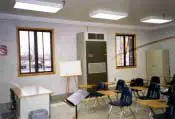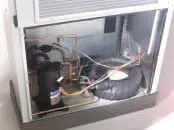SMART ENGINEERING. TRUSTED PROTECTION. RUGGED RELIABILITY.
BARD MANUFACTURING. THE NAME YOU CAN TRUST.
First and foremost, we’re recognized for designing, manufacturing and servicing high-quality products that you can trust to deliver performance, innovative technology and reliability.
Tennessee Valley Authority Nashville, Tennessee
Reduced Installation and Operating Cost Are The Priority
It is common knowledge that a geothermal heating and cooling system provides a school with one of the most energy efficient climate control options available. What tends to be overlooked is that there are several geothermal system options available, which offer varying degrees of cost savings. What type of geothermal system provides the climate control and ventilation that your classroom deserves and maximizes cost savings?
This was the challenge recently posed to Bill Stalker, a Marketing Manager for the Tennessee Valley Authority. To assist his efforts, Mr. Stalker called on Blake Neville, P.E., of Neville Engineering to perform an independent study of two different geothermal systems. For simplicity, the comparison was made on an individual classroom basis.

Q-Tec installations are quick, easy, and reduce installation labor cost and project completion time.
The Bard system chosen for the study featured a 4-ton packaged QW series ground source heat pump with its patented, built-in energy recovery ventilator. The other system consisted of a 3-ton console heat pump and a separate, dedicated ventilation air unit (both provided by two widely-used, well-known HVAC manufacturers.) General assumptions like the number of occupants, ventilation loads, cooling/heating hours, installation costs and well drilling expenses were identical for both systems.
The results were impressive:

TVA study reported savings using Bard - $1,300 installation cost/classroom and $493 operating cost/year per classroom.

Based on the study’s numbers, the Bard unit would not only save a school district $1,300 per classroom in upfront installation costs, it would continue to save them $493 per classroom every year in operating costs.
Multiply both the upfront and operating savings by the number of classrooms in your school, and it all adds up to additional budget money for a few more field trips, a few more library books, a few more teaching supplies, etc.
A third-party verification with results like these? Sounds like a choice that’s easier than your students learning their ABC’s.